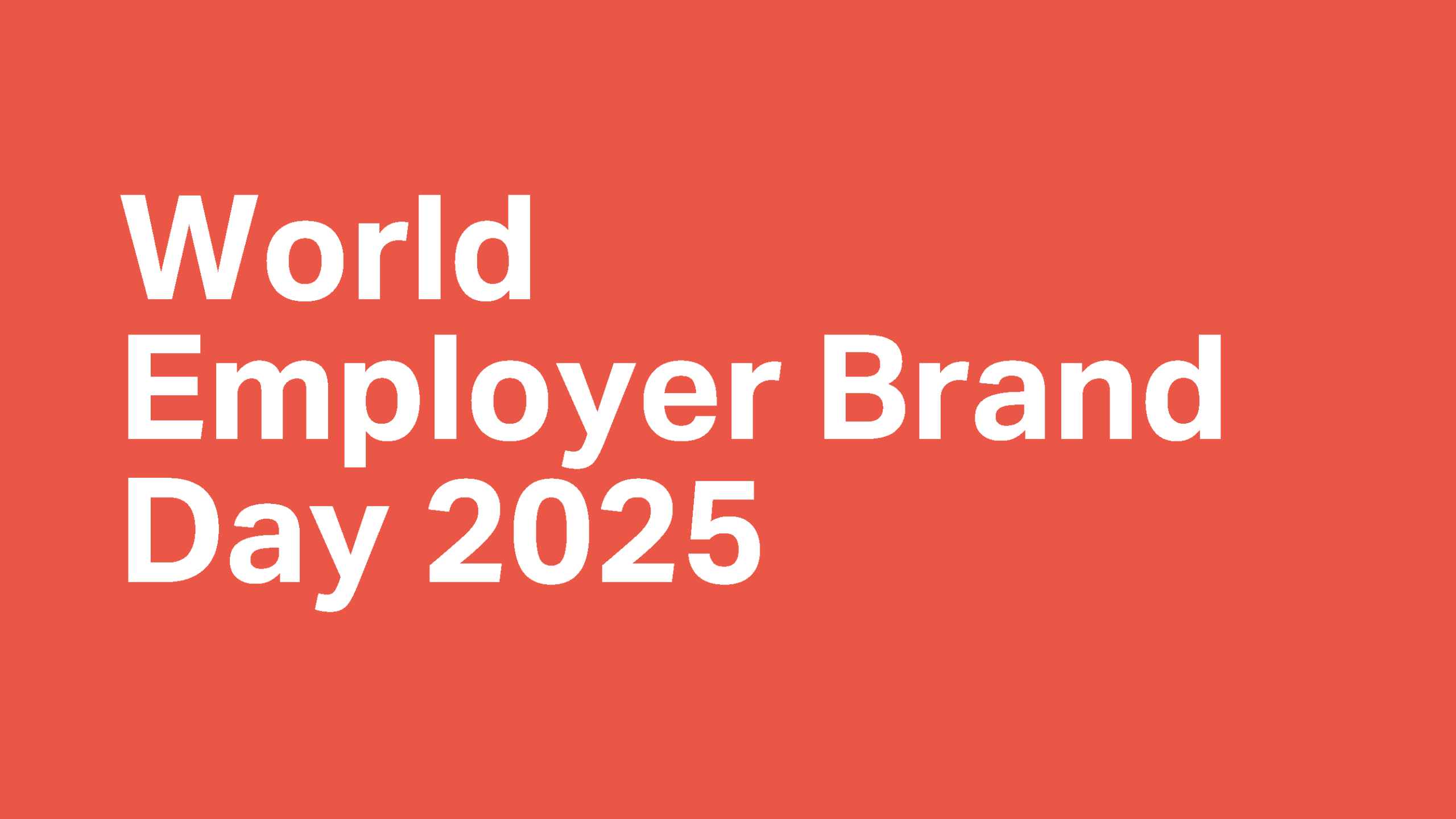The sharpest employer branding tool that barely anyone uses: Strategic sacrifice

The most effective employer brands aren’t trying to please everyone. They make a choice, they commit, and they use strategic sacrifice to guide their decisions.
It’s what Dropbox did when it bet big on becoming a “Virtual First” company. No hedging. No hybrid half-measures. They redesigned their culture around remote work and unapologetically walked away from talent who preferred in-office life.
The result?
- Nearly double the job applications per posting
- A 126% increase in offer acceptance rates
That’s not just smart branding. That’s actual business performance.
Yet nearly all of today’s employers are still getting it wrong
In the race to attract top talent, many employers fall into a familiar trap: trying to be everything to everyone. And the result? Employer brands that sound vague. Nice. Generic. They sound like everyone else and end up speaking to no one.
The irony? We’d never take this approach when building a consumer brand. Because most successful businesses don’t do that. They make sacrifices.
From Apple sacrificing customisability for sleek design, to Ryanair sacrificing comfort for price, strategic sacrifice is the deliberate choice to exclude certain audiences, industry truths, or proposition elements in order to build a sharper, more commercially viable product.
But when it comes to employer branding, it’s as if we completely forget our fundamentals and rush off to join the sea of sameness, proudly clutching our carefully selected stock photos and ‘Employer of Choice’ award.
‘But wait!’ I hear you cry out, ‘Our company logo and inspirational drone footage do make us unique!’
Ok – I want you to pause for a second and close your eyes (well, not just yet, wait until you finish reading this paragraph). When you do, I want you to put your ‘candidate hat’ on, and picture yourself skimming through job ads and careers pages – dozens, maybe hundreds, as is increasingly the case these days. You finally come across your company’s content and are greeted by yet another ‘place of growth and progression’, where ‘our people are our greatest asset’, who ‘can make a real impact’.
Now, other than the fact that your company is advertising a relevant vacancy, do you really think there’s something that would compel you to bother clicking through to read more?
Simply put, your employer brand is giving you zero commercial advantage.
Why is strategic sacrifice in employer branding so hard for most organisations?
1. No real link to business strategy
Too many employer brands are built as tactical comms exercises, slogans and campaigns with no connection to the actual unique direction of the business. Without a distinct North Star, the brand defaults into being broad, unfocused and forgettable.
2. HR is in charge of defining the brand’s DNA (EVP)
An employee value proposition (EVP) is the articulation of what you offer as an employer, and the employer brand, is how that EVP is activated and experienced. When HR shapes the DNA and then passes it on to TA/Marketing for activation, your employer brand manifests as HR best practice (ticking all the boxes) rather than brand best practice (strategic & differentiating in the market).
3. Built quickly in a contextual vacuum
Employer brands created by a single team rarely reflect the full lived experience of employees. It then becomes much safer to articulate everything at a broad, shallow level, rather than landing on a sharp shared truth everyone across the org can get behind.
4. Perceived diversity of candidate expectations
Because employer brands compete across industries, not just within them, the perceived diversity of talent expectations makes companies default to broad and generic messaging
like ‘career growth’ or ‘collaborative culture’, to not alienate potential talent.
5. Lack of outside perspective to challenge assumptions
The less you know about how other employer brands show up, the more you assume you’re doing something great and unique (Dunning-Kruger, anyone?). Without external input, brands convince themselves they have something great to offer across every proposition category, diluting their message in the process.
How can organisations get it right: Practical moves with some real-world examples
1. Get out of the boardroom and start listening, everywhere
Talk to your people across all teams, levels, and geographies. Even talk to their networks, friends, and families. What are the stories they tell that only your company could? Once you see everything, you’ll know what’s worth keeping.
2. Plot your data against objective proposition metrics
Map your research across baseline proposition drivers that represent all core human motivators in the workplace: autonomy, purpose, belonging, mastery, recognition, and security. This helps spotlight where you genuinely excel in the wider talent market, and just as crucially, where you don’t.
3. Build your brand business strategy-up, not HR-down
Brands built with business strategy at the centre make intentional, market-relevant trade-offs. Everyone knows Patagonia’s business strategy is rooted in purpose, and its employer brand follows suit. It actively deters candidates chasing status, hierarchy, or climbing the corporate ladder, and instead offers purpose-aligned perks focusing on individual exploration, wellbeing and sustainability.
4. Bring in an outside perspective
You don’t know what makes you distinct until you’ve seen what everyone else is doing. A cross-sector, impartial view from an employer branding expert can help you pinpoint – quickly and effectively – what’s genuinely differentiating about you vs. what’s going to be just noise.
5. Codify your EVP, then design to make it felt, not memorised
Your EVP is your strategic blueprint, and it should guide every single touchpoint. But don’t just write about it, design it into the experience. Uber’s employer brand doesn’t just say, “What moves us moves the world.” They build that movement into the employee journey, from Uber rides to interviews, to employee kudos systems that literally move a globe in their HQ.
6. Be brave in stripping back the flash and make your core message land
You don’t always need to rely on expensive people story videos, and flashy branding to make a mark. Look at Basecamp (37signals). Their employer brand is simple, copy-led, and still refreshingly human. “We’re not a family. We’re allies of real families.” That one line flips a tired trope on its head and says more about their culture than any animated hype reel ever could. Their brand stands out precisely because it resists the urge to blend in.
Why it’s more important now than ever
It’s no secret that we’re entering a new job applicant era. One where a candidate’s AI tools are getting just as powerful as an organisation’s own. And if your employer brand continues to be vague or vanilla, well…you’ll soon have a real problem on your hands (if you don’t already).
That’s because your ‘nice’ brand will be fundamentally designed to be as welcoming as possible. And as the candidate’s cost and effort to send out AI-boosted applications will drop to near-zero, they will have little reason not to apply.
So your wishes will come true. Your generic, run-of-the-mill employer brand will finally stop being ignored. Well, scratch that, it’ll be overrun. Intelligent application agents will flood your screening filters, optimised to say exactly what your ATS wants to hear. And these applications won’t be coming from ideal candidates either. They’ll be coming from candidates who simply want to get an interview.
Some companies are already experiencing this ‘job applicant tsunami’, flagging increasing concerns around candidate quality and authenticity. Yet their instinctive response is investing in even smarter (and more expensive) screening tech, attempting to ‘mop up’ a growing flood, instead of building a strategic dam upstream.
That’s where a sharply defined, polarising employer brand comes in.
It will give the wrong-fit candidates (and their agentic AI) a reason to opt out before they apply, while giving the right candidates a reason to act with confidence. It’s a win for the candidate. A relief for your recruiters. And a much smarter use of your increasingly expensive hiring infrastructure.
So before you spend another dime on smarter filters, ask yourself:
How can we make our employer brand sharper?
What does it dare to say ‘no’ to?
Because in the age of infinite noise, your greatest edge won’t come from adding more.
It’ll come from meaning less to more people, but everything to the right ones.




